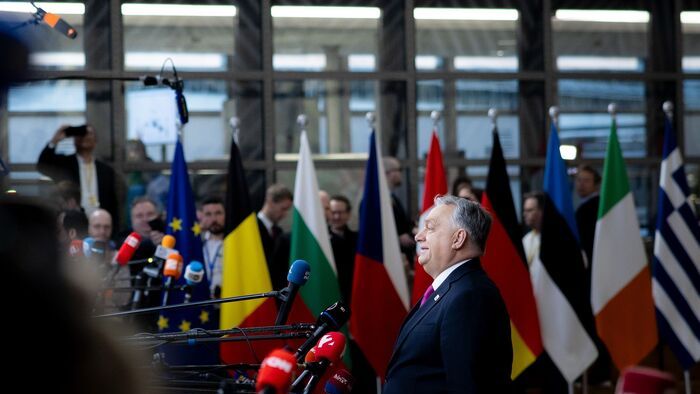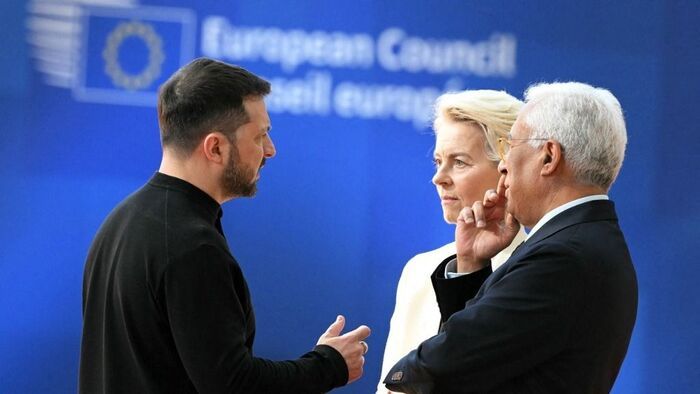According to the Financial Times, US President-elect Donald Trump expects NATO member states to increase their defense spending to five percent of their GDP. The question was also raised at Viktor Orban's international press conference last Saturday, where, in response to a question from an AP reporter, the prime minister said that the Hungarians are a peace-loving nation interested in disarmament for this reason alone, and that it would be good if we did not have to pay two percent of GDP, because we have sweated blood, but we have squeezed it out of ourselves so far. "But the world is not going in that direction, and if the current rate has to be raised, it will shoot the Hungarian economy in the lungs and bring us down, that would be half a war economy then, PM Orban said.
Hungary's Government Makes Huge Efforts to Spend 2.1 Percent of GDP on Defense
"Increasing defense spending to five percent of GDP would be a shot in the lungs for Hungary's economy," Viktor Orban said at his international press conference in response to news reports that US President-elect Donald Trump expects NATO member states to increase their defense spending. The Hungarian cabinet has already spent beyond its strength on the development of the Hungarian Defense Forces in order to reach the level required by NATO, launching a larger-than-ever military development in Hungary.

Six weapons factories in Hungary
Hungary got the arms industry back on its feet as part of its best efforts (the second most dynamic military development in Europe). In the last seven years, six weapons factories have already been built in Hungary, including the most modern and one of the largest ammunition factories in Europe, security policy expert Attila Demko highlighted on social media.
Each of the arms factories was set up either as a joint venture with a NATO ally or as part of cooperation with Israel.

The Hungarian economic news portal Vilaggazdasag compiled a list including not only the projects implemented in recent years, but also a primarily non-military development in Szeged and an older facility. Tracked and wheeled vehicles are manufactured in Zalaegerszeg, ammunition and explosives are made in Varpalota, while the integration of supplementary radar and weapon systems is done in Kaposvar. Armored combat vehicles are manufactured in Gyor, small arms in Kiskunfelegyhaza, parts for civilian and military helicopters in Gyula, radars in Nyirtelek, and laser technology in Szeged. All of these factories produce NATO-compatible ammunition or weapons, Attila Demko pointed out.
Meanwhile, the delivery of weapons ordered in previous years for the Hungarian Defense Forces continued in 2024. The modern combat equipment, as part of the National Defense and Military Development Program, serves the modernization of the capabilities of the Hungarian army and the building up of a significant deterrent force capable of guaranteeing Hungary's security and sovereignty in today's war-ridden world.
New tanks and artillery
In addition to the existing ones, the Tata brigade has received further Leopard 2A7 tanks, Wisent 2 technical recovery combat vehicles and a PzH 2000 self-propelled artillery gun. This time last year Tata had only five of the state-of-the-art Leopard 2A7HU tanks, the backbone of the heavy brigade offered to NATO, but by this year's December the number of new Leopard 2s has risen to 33. It should be noted that the brigade also has 12 older, upgraded Leopard 2A4HUs in service, not to mention the T-72s.
One PzH2000 was delivered, completing the armored self-propelled artillery class in Tata. The regimental-level sub-unit has 24 of the world's most modern tracked artillery pieces. The contract for the 44 Leopard 2A7HU tanks and 24 PzH 2000 self-propelled guns was signed in December 2018.
Apart from the above armored vehicles, the Hungarian Defense Forces will also receive technical rescue and bridge-layer tracked vehicles, also based on the Leopard 2 chassis, by 2028. Two of the five Wisent 2HUs ordered have already been delivered, and at least one of the three Leguan 2HU bridge launchers has already arrived. Built on the chassis of the Leopard 2 tank, the Wisent 2 is capable of rescuing and towing damaged and stuck combat vehicles, but it can also be used for craning, trenching and mine clearing. A very special big cat, a Leopard 2 built for driver training, also arrived at the brigade in Tata in June. Instead of a turret, the chassis of the tank is fitted with an instructor's cabin, resembling a "popemobile".
In November, another 15 Gidran armored combat vehicles arrived in Tata. The number of Gidrans at the armored brigade has reached the planned number of units, with 48 in service. The gunners have 38 Gidrans of various configurations and the riflemen have ten Gidrans. Lynx KF41 infantry fighting vehicles are being delivered to the 30th armored infantry brigade in Hodmezovasarhely. The majority of the more than 200 Lynx vehicles are being manufactured at Rheinmetall's plant in Zalaegerszeg, where the first Lynx combat vehicle ever made in Hungary was officially handed over to the Hungarian Defense Forces on July 24 this year.
Helicopters from Airbus
Airbus is delivering orders for the air force. This time last year, there were only six Airbus H225M medium-lift helicopters in Szolnok, but with the arrival of two H225M helicopters, the Hungarian Defense Forces now have 14 of the 16 helicopters ordered.
In early September, the first KC-390 from the Brazilian Embraer arrived in Hungary. The Hungarian Defense Forces purchased two KC-390 aircraft, as the air force did not yet have any similar transport aircraft. The KC-390 aircraft are the first true theater transport aircraft of the Hungary's air force. They provide the Hungarian military with capabilities such as aerial refueling, medical evacuation, combat vehicle transport, etc., which the An-26s, which were withdrawn from service a few years ago after more than 40 years, did not have. The KC-390 surpasses the capabilities of its predecessor in terms of size, speed, range and the weight of the load it can carry.
Upgraded air defense
In June, the new ELM-2084 mobile, three-dimensional, slot-filling radar of the Hungarian Defense Forces, manufactured by the Israeli company IAI ELTA and Rheinmetall Canada, was officially handed over to the Hungarian Defense Forces Air Command and Control Center based in Veszprem. Each of the eleven complexes ordered consists of three devices: an antenna system, an operations control cabin and a power supply system. Compared to the Russian technology in the system to date, the new equipment has a greater detection range, a greater detection capability and three times higher antenna rotation speed, resulting in three times higher data refresh rate, which significantly shortens the time required to detect air targets. Not only weapons and equipment ordered earlier were received this year, but also a contract was signed on February 23 to extend the technical support of the 14 leased Gripen aircraft until 2036, which will become the property of the Hungarian state after 2026. According to the agreement, four single-seat Gripen C fighters will be added to our fighter fleet between 2025-26.
'Man for Iron' campaign
This year's increase in the number of personnel clearly shows that the Hungarian Defense Forces has woken up from its 'Sleeping Beauty dream'. Back in 2023, Defense Minister Kristof Szalay-Bobrovniczky launched the nationwide "Man for Iron" campaign to recruit soldiers for the new, state-of-the-art equipment acquired. In November of that year, operators were recruited to handle the Panzerhaubitze 2000 self-propelled guns, for a gross entry salary of about 737 thousand forints (1,930 euros).
As a result of the campaign, in February this year, in two days, about 500 young people were recruited to the MH Klapka Gyorgy 1st Armored Brigade in Tata, and in August, and more than 70 young people joined the 30th Armored Infantry Brigade of the MH Kinizsi Pal Battalion in Hodmezovasarhely to receive training for the Lynx KF-41 armored combat vehicle.

On December 10, at a meeting of the National Assembly's Committee on Defense and Law Enforcement, the defense minister praised the results of the recruitment to the Territorial Defense Reserve, pointing out that the territorial defense force is now an independent component of the Hungarian Defense Forces, and the seven territorial defense regiments cover all of Hungary. He pointed out that in a few months 3,500 young Hungarians joined the territorial defense forces and their training was ongoing.
"Since Hungary switched to voluntary service in territorial defense, it's the first time that so many people have joined the Hungarian Defense Forces in such a short time," the minister pointed out. The reservists recruited in the campaign titled 'I love it, I protect it', can take part in training and drill exercises mainly on weekends, in line with their civilian life.
The Hungarian Defense Forces provides financial benefits to territorial defense reservists. When launching the recruitment, the defense minister announced a new package offered to reservists: after completing the basic training, they receive a gross availability fee of 600 thousand forints, paid in monthly installments of 50 thousand forints, a gross signing bonus of 150 thousand forints, and a gross amount of 500 thousand forints is awarded to any volunteer reservist who refers a candidate who subsequently signs a contract with the Defense Forces after completing the basic training. Students in higher education are entitled to a gross monthly stipend of 160 thousand forints, and students in vocational training to a gross monthly stipend of 110 thousand forints, if they volunteer for service during their studies. In October, the defense minister drew attention to the fact that hundreds of reservists, more than ten percent of those recruited in the summer, have transferred to the professional ranks. The flexible training system made this possible, he noted. The above data show that, as pointed out by Hungary's prime minister, the government made enormous efforts, even this year alone, to strengthen the armed forces, thereby achieving that 2.1 percent of the gross national product is spent on defense, ahead of many European Union member states.
A téma legfrissebb hírei
Tovább az összes cikkhez
Hungary Will Not Assist in Financing the War
This will be a long day in Brussels.

Data Protection Authority Files Police Report Over Tisza Party’s Data Leak
Authority initiates several data protection procedures.

Hungary FM: European Leaders Are Doing Everything to Undermine Ukraine Peace Process
While the United States is working hard to bring the war in Ukraine to an end, Western European leaders are doing everything they can to undermine the peace process.

PM Orban to Discuss Crucial Issues at EU Summit
The coming days will see a confrontation between pro-war and pro-peace forces, PM Orban said.
Ne maradjon le a Magyar Nemzet legjobb írásairól, olvassa őket minden nap!
- Iratkozzon fel hírlevelünkre
- Csatlakozzon hozzánk Facebookon és Twitteren
- Kövesse csatornáinkat Instagrammon, Videán, YouTube-on és RSS-en

Komment
Összesen 0 komment
A kommentek nem szerkesztett tartalmak, tartalmuk a szerzőjük álláspontját tükrözi. Mielőtt hozzászólna, kérjük, olvassa el a kommentszabályzatot.
Címoldalról ajánljuk
Tovább az összes cikkhez
Hungary Will Not Assist in Financing the War
This will be a long day in Brussels.

Data Protection Authority Files Police Report Over Tisza Party’s Data Leak
Authority initiates several data protection procedures.

Hungary FM: European Leaders Are Doing Everything to Undermine Ukraine Peace Process
While the United States is working hard to bring the war in Ukraine to an end, Western European leaders are doing everything they can to undermine the peace process.

PM Orban to Discuss Crucial Issues at EU Summit
The coming days will see a confrontation between pro-war and pro-peace forces, PM Orban said.
















Szóljon hozzá!
Jelenleg csak a hozzászólások egy kis részét látja. Hozzászóláshoz és a további kommentek megtekintéséhez lépjen be, vagy regisztráljon!